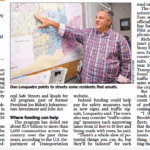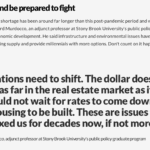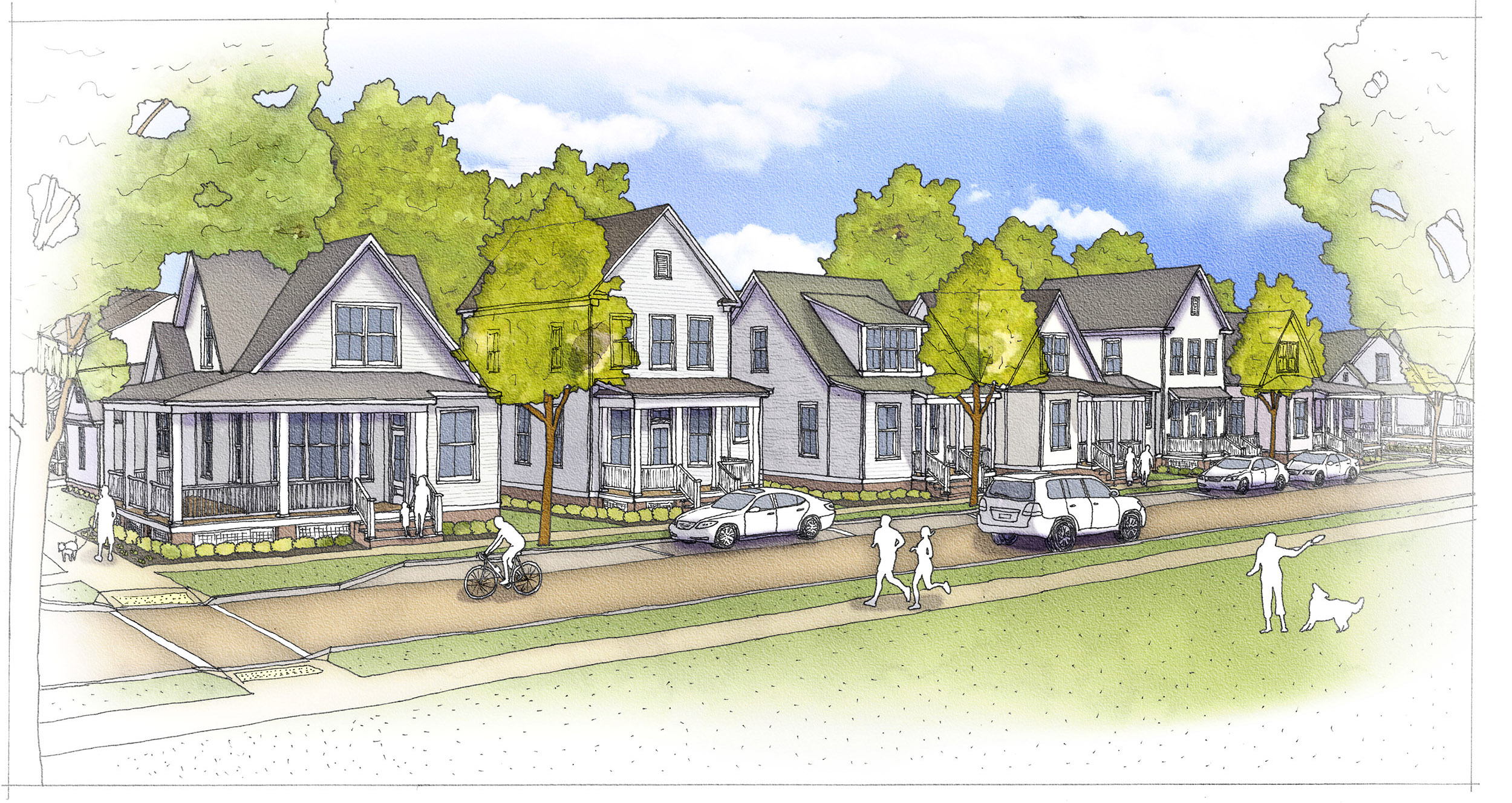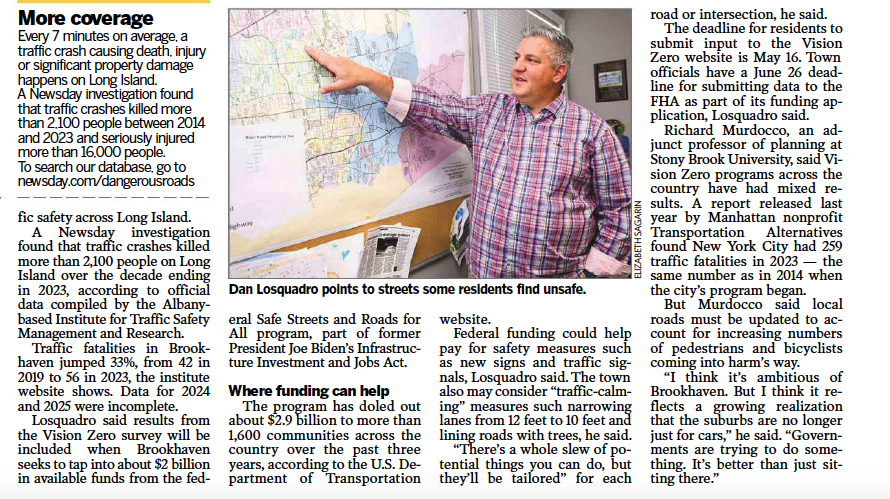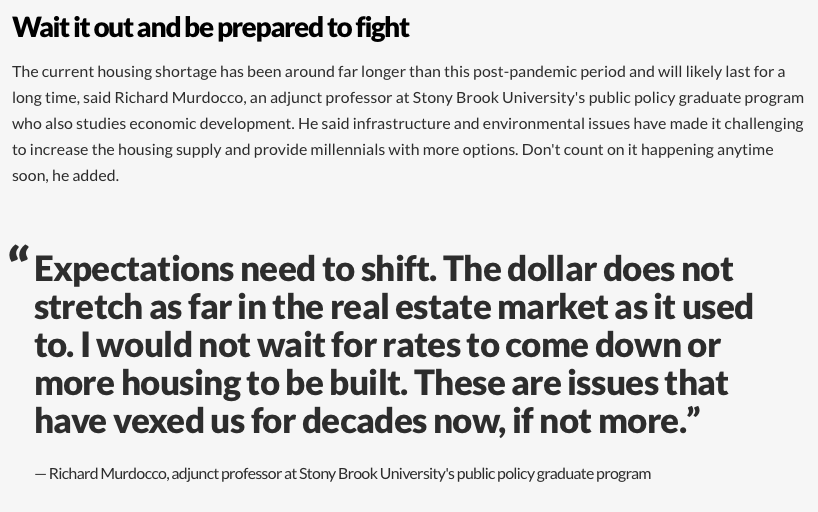Recently, the Suffolk County Legislature introduced IR 2093, which would explore the option of creating a land bank in Suffolk County. A land bank is defined as follows:
Land banks are local entities authorized to take control and redevelop vacant or abandoned properties to where they can better serve the public interest. With many Upstate municipalities suffering from an overabundance in vacant and abandoned properties due to population losses, land banks will give cities and counties a new tool to rebuild communities and foster local economic development.[1]
Who pays for the land, and who would be in charge?
Land Banks are often the result of multi-jurisdictional agreements between various taxing entities such as cities and counties and are better suited than the individual entities to manage a portfolio of property. Land Banks can generally acquire land through transfer from public entities, donations and purchase on the open market.
Revenue can be collected from rents, sale of properties, payment for services, grants, loans, bonds and local, state and federal sources. Some Land Banks receive a portion of the property taxes generated by a parcel that is returned to the tax rolls over a set number of years. The staffing necessary to operate a Land Bank can be independent of its parent entities or rely on existing staffers at the city and county level and is typically overseen by a board of local public officials or other interested individuals. Such staff costs are typically covered by the land bank revenues making them self-sufficient entities.[2]
For funding, the NYS law states that the land bank:
1. A land bank may receive funding through grants and loans from the foreclosing governmental unit or units which created the land bank, from other municipalities from the state of New York, from the federal government, and from other public and private sources.
2. A land bank may receive and retain payments for services rendered, for rends and leasehold payments received, for consideration for disposition of real and personal property, for proceeds of insurance coverage for losses incurred, for income from investments and for any other asset and activity lawfully permitted to a land bank under this article.[3]
IR 2093 was introduced by Legislator DuWayne Gregory, who represents Legislative District 15 (Wheatley Heights, Wyandanch, East Farmingdale, North Amityville, Amityville and Copiague). Historically, Wyandanch and North Amityville have been economically distressed, and the foreclosure crisis has hit these areas proportionally harder when compared to the rest of Long Island.[4]
IR 2093 would grant the Suffolk County Department of Planning the right “…to perform a complete review and report of the new State law authorizing the creation of land banks, as codified in Article 16 of the New York Not-For-Profit Corporation Law; that the report shall include an examination of the State-authorized land bank’s structure and function, as well as the potential benefits and costs associated with the County establishing same.”[5]
Chapter 257 of the Laws of 2011 added a new article 16 to the not-for-profit corporation law. The article allowed municipalities to establish land banks for the purpose of acquiring real property that is tax delinquent, tax foreclosed, vacant, or abandoned. The legislative intent of the article reads as follows:
The Legislative intent of the Act found and declared that New York’s communities are important to the social and economic vitality of the state and that whether urban, suburban or rural, many communities are struggling to cope with vacant, abandoned and tax delinquent properties.
In order to combat the problem of vacant and abandoned properties, the Act permits local communities to create land banks to be utilized by communities to facilitate the return of vacant, abandoned and tax-delinquent properties to productive use. The primary focus of land bank operations is the acquisition of real property that is tax delinquent, tax foreclosed, vacant and/or abandoned, and to use the tools of the Act to eliminate the harms and liabilities caused by such properties.[6]
In other parts of the country, Land Banks have been successful in repurposing blighted parcels:
The strategy has met with success in some of the nation’s inner cities that have been ravaged by the foreclosure crisis, such as Detroit and Cleveland. Land banks have assembled parcels for green space, urban farming, side lots, community amenities, commercial development and affordable housing, among other uses. New York’s law will allow cities and counties across the state the ability to develop land banks, which would be tasked with converting vacant, abandoned or tax-delinquent properties into productive use.[7]
The assembly of blighted parcels for use as open space, (as mini-aquifer recharge zones) would be an area of interest for environmental organizations, and the banked parcels can serve as the sites of truly affordable housing units. In other regions, land banks have been used to boost land values:
Land banks have been gaining popularity in the past decade, particularly in Rust Belt states such as Michigan and Ohio. Land banks are able to acquire property, clear titles and dispose of land so the parcels again generate tax revenue. The best national example is the Genesee County Land Bank in Flint, Mich., a city of 102,000, people down from 190,000 in 1960. This organization, formed in 2002, has developed innovative programs to facilitate the reuse of more than 4,000 formerly vacant and abandoned properties including side-lot transfer (more than 200 parcels), community gardens, housing rehabilitation and foreclosure avoidance (serving more than 1,300 families). Since its inception, this land bank has helped real property values in Flint to increase by more than $100 million.[8]
While increased land values are a worth goal, especially in the poorer parts of the island, the focus of the land bank should be site remediation.
The Land Banks Implications on Affordable Housing and Open Space in Suffolk County
Land on Long Island always has a premium price, especially in western Suffolk County, so the land bank’s purpose of increasing real property values is not as crucial to this region as it may be to other parts of the country. However, the land bank would be helpful in repurposing the various blighted sites across Suffolk County. On a regional level, the creation of a land bank would allow for an inventory of land that the Long Island Regional Economic Development Council can use when developing their land use strategies.
The land use implications that this would have on Suffolk County are far reaching. Affordable housing needs are projected to be between 26,597 to 41,429 affordable units that are needed between 2005 and 2030 to serve current and anticipated population.[9]
Often, developers do not build affordable units due to the limited profits gained by their sale. It is the economics of the situation, paired with community opposition to affordable and rental units that lead to a challenging environment in which municipalities have to navigate in order to build affordable subdivisions. Land banks may expedite the process of providing affordable units, because many of these defaulted properties have sound, existing structures on them. Data on the extent of the foreclosure crisis for Long Island offers insight to the extent of the problem:
Over all, Long Island’s foreclosure rate is 3.7 percent, with at least 31,000 homes in some stage of foreclosure from 2005 through August 2008, according to the data, from The Long Island Real Estate Report. That is slightly higher than the 3.3 percent rate for the region, covering New York City, western Connecticut, Long Island and New Jersey.
Suffolk County had more homes in foreclosure between January 2005 and August 2008 — more than 19,000 — than any other county in the region. Suffolk also had the steepest increase in foreclosure filings over that time. With 4.3 percent of residential properties in foreclosure at some point over the 44 months, Suffolk had the sixth-highest foreclosure rate, behind New Jersey’s Essex and Union Counties and the Bronx, Queens and Brooklyn.
In 2005, Suffolk’s hardest-hit areas were limited to a few pockets — Central Islip, Brentwood, Islandia, Wyandanch and an area straddling the Farmingdale-Amityville line — where between 2 percent and 4 percent of residential properties were in foreclosure.[10]
Using the New York Times’ data, a quick mathematical can some insight as to how much land can be repurposed or become dedicated open space. The average lot size in areas with the most foreclosures is a conservative 20 ft by 100 ft in Suffolk County, which is 2,000 sq/ft. If you multiply that by the 19,000 foreclosed properties in Suffolk, and divide it by 43,560 (the square feet in an acre), you can reach a rough estimate of how much land is available for transformation or preservation. Following this ballpark formula, roughly 872 acres of land can potentially be acquired by the land bank in Suffolk County alone. If 1/4th of an acre plots are used (10,891 sq/ft), then 4,750 acres may be impacted. Given the dichotomy of lot size between western and eastern Suffolk County, it is safe to assume that the impacted lands will be anywhere between 1,000 to 3,000 acres.
The above formula is a very rough estimate, but it does give perspective as to the scale of the problem looking to be corrected. Keep the following in mind:
Data from The Long Island Real Estate Report suggest that fewer than 1 in 10 foreclosed properties on Long Island end up on the auction block.[11]
It is important to note that foreclosure does not mean vacant properties, but is a good indicator of how many parcels could potentially be impacted by the creation of a land bank.
Conclusion:
In closing, a land bank as would be a beneficial policy for the Suffolk to pursue. Blight is never welcome in any community and any policy that looks to restore blighted parcels to serve either as open space or affordable housing is a positive step forward. In areas where the foreclosure crisis hit the hardest, IR 2093 would Redevelopment of such sites should be the both the County’s and Townships priority, and alleviate the pressure to create new urban centers from Long Island’s increasingly sparse open spaces. The land bank would be a serious attempt at tackling the affordable housing problem, which has been the biggest failure in planning on Long Island for the last 50 years.
[1] Cuomo signs Land Bank Legislation, 07/29/11, Press Release, New York State Governor’s Press Office
[2] The Case for Land Banks, Jordon Talbot, Empire State Future 05/17/11
[3] NYS law Article 16, SS1600-1617 authorizing the creation of a land bank
[4] 2010 US Census
[5] Suffolk County IR 2093, laid on table 12/06/2011
[6] NYS law Article 16, SS1600-1617 authorizing the creation of a land bank
[8] Land Banking, Empire State Future
[9] Long Island Regional Sustainability Plan, Housing Element, Forman and Koppelman, 2007
[10] Long Island Foreclosure Rates Rise, With No End In Sight, Derrick Henry and Janet Roberts, New York Times, May 13th, 2009
[11] Long Island Foreclosure Rates Rise, With No End In Sight, Derrick Henry and Janet Roberts, New York Times, May 13th, 2009



